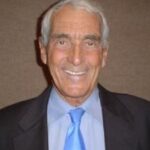The universe beyond Earth has always fascinated people, and the quest to establish a foothold for humanity in the larger cosmos has driven many people to accomplish great deeds.
In The Space Barons: Elon Musk, Jeff Bezos, and the Quest to Colonize the Cosmos, Washington Post staff writer Christian Davenport weaves an engrossing tale of two larger-than-life tycoons of industry—Tesla Motors founder Elon Musk and Amazon.com founder Jeff Bezos—and their efforts to reach for the stars.
Stepping In
As the “space race” between the United States and Soviet Russia in the 1960s and 1970s cooled down, the U.S. government’s space program faltered. The last manned landing on the Moon, Earth’s nearest astronomical body, took place in 1972, and the last Space Shuttle mission was in 2011.
Where the government has abandoned exploration of the heavens, the private sector has taken the lead.
First among these new trailblazers of manned space exploration are Jeff Bezos, Elon Musk, and other individuals with the resources and the vision to see beyond the clouds, Davenport writes.
“Musk and Bezos were the leaders of this resurrection of the American space program, a pair of billionaires with vastly different styles and temperaments,” Davenport writes. “Always audacious, Musk had plowed far ahead, his triumphs and failures commanding center stage. Bezos remained quiet and clandestine, his mysterious rocket venture kept hidden behind the curtain. But there were others.
“Like Bezos, Richard Branson was promising to fly tourists past the edge of space to get glimpses of Earth from above and experience a few minutes of weightlessness,” Davenport writes. “Paul Allen, the cofounder of Microsoft, who had backed the first commercial spacecraft, was now building the largest airplane the world had ever seen. Bigger than Howard Hughes’s Spruce Goose, it’d be able to ‘air launch’ rockets—and perhaps even a new space shuttle, called ‘Black Ice,’ it was developing in secret—from 35,000 feet.”
Competition and Contrasts
Davenport’s recounting of anecdotes featuring Bezos, Musk, and the rest of the new crop of cosmic explorers is delightful, and readers will marvel at the detail in which he paints the scenes illustrating the contrasts and similarities among these so-called “space barons,” especially when their ambitions bring them into conflict.
“The tension would play out in legal briefs and on Twitter, skirmishes over the significance of their respective landings and the thrust of their rockets, and even a dispute over the pad that would launch them,” Davenport writes. “Musk, the brash hare, was blazing a trail for others to follow, while Bezos, the secretive and slow tortoise, who was content to take it step by step in a race that was only just beginning.”
Questionable Regulatory Burdens
One highlight of The Space Barons is Davenport’s lovingly retold anecdotes about the ways government regulations have hamstrung advancements in aeronautics, and the proactive work these tycoons have undertaken to slip loose those bonds and reach for the stars.
When SpaceX’s construction plans were hobbled by outdated government regulations, Brian Mosdell, director of the company’s operations in Florida, worked with policymakers to demonstrate the benefit of regulatory reform, Davenport writes.
“When the company was told it would cost $2 million for a pair of cranes to lift the Falcon 9, for example, it questioned the price, wanting to know why it was so expensive,” Davenport writes. “The reason was that the Air Force required the cranes meet a series of safety requirements to prevent, say, a hook from suddenly dropping too fast. But modern technology had rendered many of those requirements, some decades old, unnecessary. Mosdell and the SpaceX team lobbied the Air Force officials at Cape Canaveral, ultimately convincing them to strip out many of the old regulations that were driving up the price. They did, and SpaceX was able to purchase the cranes for $300,000.”
Ushering in the New
The government monopoly on space exploration is declining, and like twin rocket ships, Bezos and Musk are leading humanity into a sleek and streamlined new era of private-sector-led space missions.
Both of these “Space Barons” are too young to remember Neil Armstrong’s walk on the Moon, but they are the ones who may show the way to the future, Davenport writes.
“Bezos was five when he watched Armstrong walk on the moon,” Davenport writes. “Musk had not yet been born. But with their massive fortunes and ambition, they were reenacting the Cold War space race, a pair of Space Barons starring in the roles of nations, hoping to pick up where Apollo had left off more than a generation earlier. Their race to the stars was driven not by war or politics; rather, by money and ego and adventure, a chance to extend humanity out into space for good.”
Readers will be mesmerized by Davenport’s recounting of the wonderful accomplishments of these brilliant, thrill-seeking explorers of a new frontier. Although the author makes it clear that claiming the universe as a second home is still a distant dream, the works of accomplished, driven men like Bezos and Musk may bring humanity a few steps closer to making that shared vision a reality.





